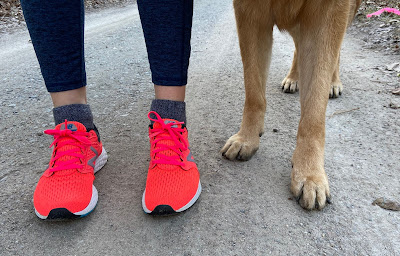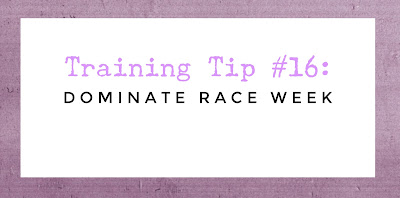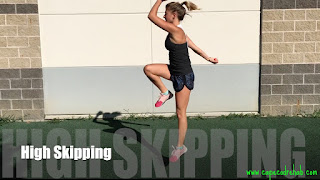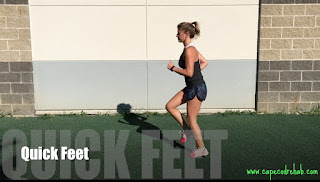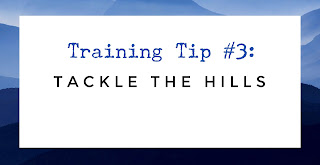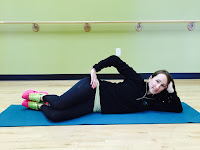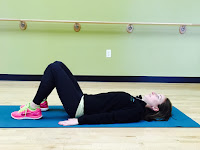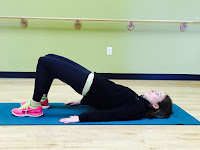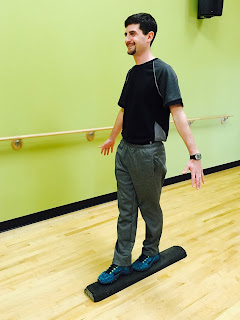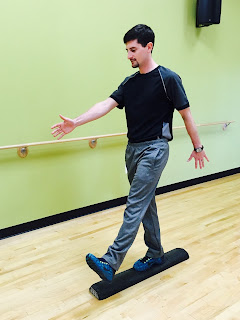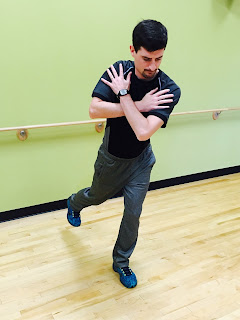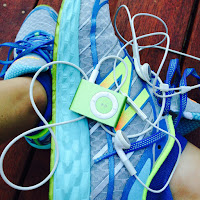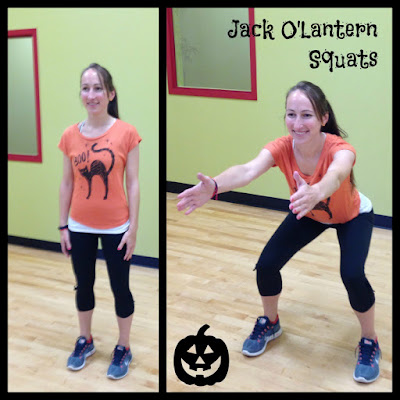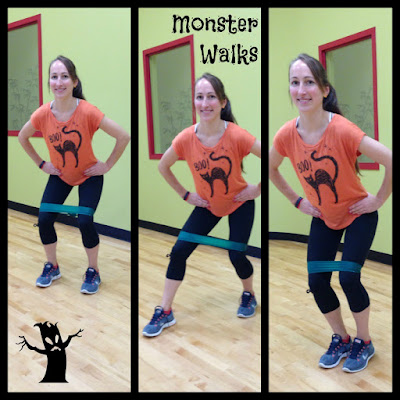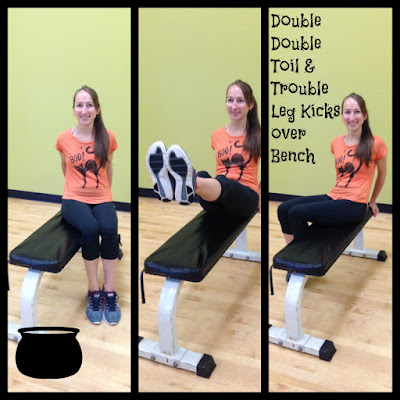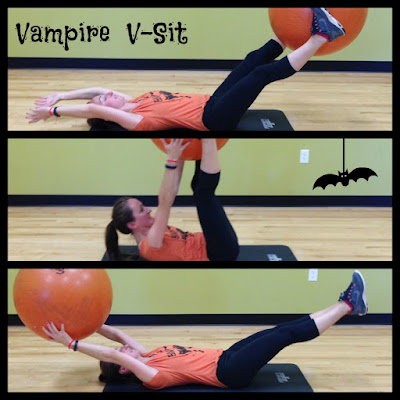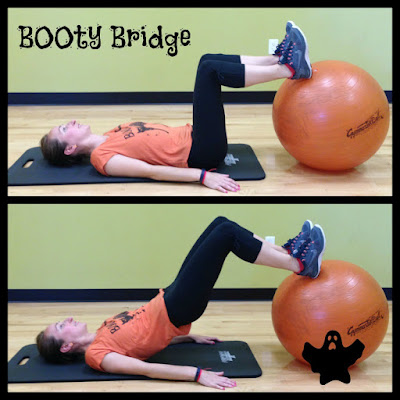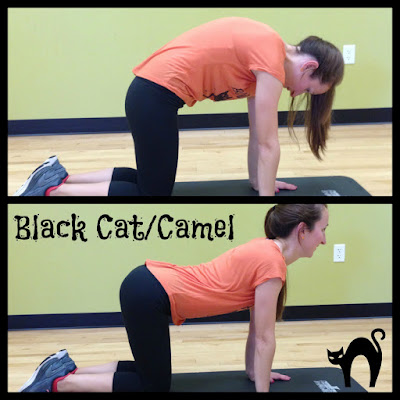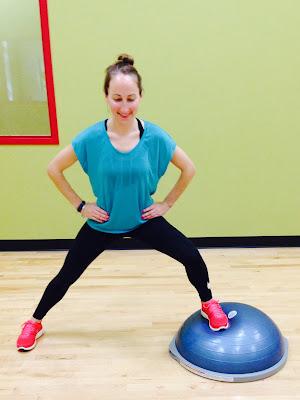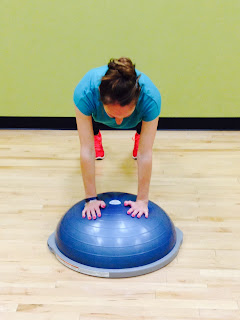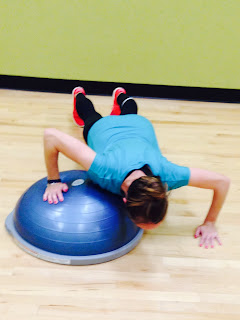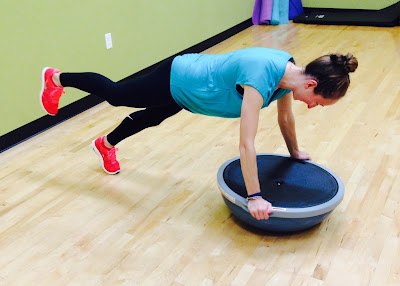Rules of the Road and Safety Tips for Runners & Walkers
quarantine! The beach parking lots may
be closed but the roads are always open and it’s great to see so many new
people running, walking and biking.
watching Netflix all day or sitting at a desk working from home for 8 hours
straight, it’s important to get out of the house for some fresh air, Vitamin D
and get the blood flowing as long as you are not sick or at-risk of spreading
the virus.
the unwritten rules of the road:
Travel on the correct side of the road.
or don’t follow this rule. Not only is
it much safer, in some states it’s even a law.
And with social distancing being such a hot topic right now if everyone is
on the wrong sides of the road, it’s more difficult to avoid close contact when
passing fellow runners and walkers. It’s
always best to run or walk on the sidewalk but on roads without them, travel on
the side of the road so you can see the cars coming towards you. Don’t assume drivers can see you. Stay alert and be ready to jump out of the
way from distracted drivers.
Keep your dogs on a leash.
them on a leash. It doesn’t matter how
well behaved you believe your pet is, a charging dog and one misstep can lead
to an injury and a few weeks of recovery.
Many leashed dogs are triggered by off-leash dogs so even if you’re dog
is friendly, another dog could react. On
a similar note, for goodness sake pick up your dog’s poop!
Wear a mask to cover your nose and mouth…
even outside.
face coverings in public settings where other social discancing measures are
difficult to maintain to reduce the spread of the virus from spreading between
people interacting in close proximity.”
If you’re running on crowded sidewalks or trails, it may be difficult to
follow the 6-foot rule. Play it safe and
cover your nose and mouth with a mask, BUFF or other breathable face covering
especially when approaching/passing others because COVID-19 can be transmitted
outside through the air if someone coughs or sneezes.
Get comfortable running alone.
solo and ditch the running group and training partners. Need that motivation to get out on the door? Check in with your run buddies daily. Create Facebook accountability groups. Follow your friends on Strava. Some run clubs are even doing virtual runs. And you’re worried about running alone for
safety reasons, there are different apps and GPS watches that send tracking so
others can keep track of your whereabouts.
My family uses the Road iD app which sends “ecrumbs” so we can follow
along. The app even sends an alert if
you are stationary for more than 5 minutes.
I also bring along mace (I only recommend it if it’s legal in your state
and if you’re familiar with using it) and my scary 80-pound pup to keep me feeling
safe.
If you’re out at night, see and be seen.
National Safety Council the chances of being struck and killed as a pedestrian
increase 1100% after dark? Some runners are practicing social distancing by waiting
until dark to run outside in hopes that they will encounter less people on the
roads, just make sure you invest in a good headlamp and some reflective gear.
If you’re driving, yield to pedestrians
at the crosswalk.
law, it’s rude! Just a personal daily run
frustration that I had to mention.
Acknowledge your fellow runners and
walkers.
nice. A smile or wave is even better. You may be suffering
but we suffer together. The running community is special and we’re all out
there for different reasons with different goals but even alone we are all in this together and I believe it is absolutely necessary to at least acknowledge those
that are out there pounding the pavement with you.
by Jen Skiba.
Get The Most Out Of Your Personal Training Sessions
training is an option for members who need the extra motivation or guidance to
get through a workout. It’s also a great
way to learn new exercises and progress your fitness routine.
trainer is great but are you getting the most out of your sessions?
Set Clear Goals
that you and your trainer are on the same page. It’s also important that you set clear goals so
your trainer can build the appropriate program for you. Think SMART
goals: Specific, Measurable, Achievable, Realistic, Timely. Goal setting should be worked into your first
appointment and revisited during each session.
Arrive Early
over and over again to my clients… warm up before your session! Showing up late not only cuts into your
training time but now the trainer has to incorporate a warm up into the routine
leaving not much time for actual exercise.
Show up early to get in a little cardio, dynamic stretches and/or foam
roll so you’re ready to go when the session begins.
Speak Up
should go both ways. Ask questions. Let your trainer know how you’re feeling and exactly
what you’re feeling. If something isn’t
right, don’t be afraid to speak up. We
appreciate your feedback and honestly!
Do Your Homework
show up to your once a week training appointment and expect to see progress. Your trainer can work with you to build a weekly
plan but it’s ultimately up to you to commit by exercising on your own, eating
right and recovering well.
Bring A Buddy
with motivation? Find a friend with similar
fitness levels and goals to team up with.
They can help get you out the door on days you may consider cancelling
and help push you harder during the workout.
One-on-one personal training can get expensive so ask about most
cost-effective group personal training rates.
Attitude Is Everything
their own reason for working out but if you’re not invested in your own health
and fitness, you’re never going to get results.
A positive attitude is key along with patience, commitment, consistency,
and hard work.
Begin a Fitness Routine
Resolutions involve fitness?
and running in 2016—then great! Keep it
up!
that you will get off the couch and begin a fitness routine then read below for
some tips to help you get going…
Set goals.
vague: lose weight, eat healthy, start running, etc. If your goal is to lose weight, as yourself
how much you want to lose, how long it will take me to get there and what do I need
to do to accomplish that goal? Set SMART
goals.
- Specific.
- Measurable.
- Achievable.
- Realistic.
- Timely.
Have a plan.
a plan is just a dream.” Whether it’s a
running specific goal or you’re starting to strength train and eat better,
develop your plan. Map our a few weeks
and refer back. This will help you stay
on track.
Ease into it.
week of January is go hard on your resolutions every single day. Being too ambitious and diving right into a
new routine or high mileage running will only set you up for burnout and
injuries. Your body needs to adapt to
the new stresses and recover.
Hire a coach.
started? Hire a personal trainer or
certified coach for some guidance and expert knowledge.
Be patient.
and self-motivation. All you can do is
stay consistent and keep working towards your goals.
Have fun!
Marathon Training Tip #16: Dominate Race Week
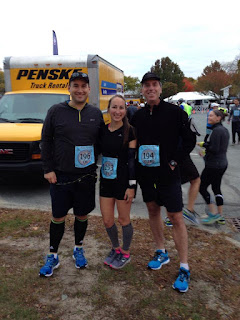 |
| Jon, Jen & Joe in 2015 |
the miles. It’s time to trust your
training, let your body rest up and prepare for the big day.
try to cram in extra miles or speed workouts before the race. You are in taper. Enjoy it.
Try to stay off your feet and avoid any extra activities that may tire
you out or potentially injury you. Take
some time to put your feet up if you can.
night this week. Excitement and nerves
often keep us tossing and turning the night before a big race but don’t panic. It has been said that Ryan Hall broke the
American Record at the Houston Half Marathon off of only a few hours of sleep!
diet. Don’t try anything new—especially
race morning and the night before the race.
Avoid spicy foods, seafood or anything with heavy cream that may upset
your stomach and make sure you are hydrating throughout the week.
a race strategy but be ready to adapt.
We all have good days and bad days.
What if Mother Nature does not cooperate or something goes wrong? How will you recoup and finish the race when
giving up is not an option? I always say
at some point of every race take a look around at all the other runners,
volunteers and race supporters. Everyone
out there on the course has their own story to tell about their training and
struggles. Pull some motivation and
inspiration from others around you.
Appreciate the run and learn from your experiences.
tips—from negative splits to strength training and kinesio taping, you can view
them all by clicking on the Cape Cod Marathon tag: https://mashpeefitness.blogspot.com/search/label/Cape%20Cod%20Marathon
 |
| Jen after the 2015 Cape Cod Half with race volunteer & Mashpee Fitness member Beth T. |
About
Coach Jen Skiba
middle-distance runner for Falmouth High School and has been involved with the
sport for over 12 years as a runner, official, race management, and coach. A Mashpee Fitness trainer and Certified
Running Coach through the Road Runners Club of America (RRCA), Jen enjoys
working with runners in the gym and on the roads. “Whether you are a beginner
looking to get started running or at the intermediate level hoping to improve
your times or tackle new distances, I can help you reach your goals!”
Marathon Training Tip #15: Get Race Day Ready
stressful. Here are a few things you can do during your training and leading up
to race morning to minimize stress and help you arrive at the start line with confidence
and ease.
Know
the course.
chart. If you are local, try to
incorporate parts of the course during your normal training runs. If you are travelling for the race, try to at
least drive over the course before race day.
Visualize yourself out there and come up with a plan of how to tackle
the distance.
Marathon specific race strategies…
Practice
pre-run meals.
your food choices. Before your long
runs, simulate race morning. See what
time your race starts and practice running at that time. (The
Cape Cod Half starts at 7:30am, the Cape Cod Marathon starts at 8:30am!) Every runner is different. How early do you need to eat before your
run? Can you drink coffee before your
run? If you are staying in a hotel the
night before your race, see what the hotel has to offer in terms of breakfast—and how early breakfast opens
up—and plan ahead if you need to bring your own meal. Learn what works best for you and then
continue to practice the same habits during training and then again on race
morning.
Determine
your race nutrition and fueling strategies.
is the fuel you take during your runs.
If you are training for a 5k and possibly even a 10k, you won’t have to
worry about fueling during your race. If
you are training for a half marathon or full marathon, this is a very important
concept.
the race. (The Cape Cod Marathon is sponsored by CLIF with Fuel Stops at mile
9.25 for the half and mile 21 for the full.
Each water stop offers both water and Gatorade.) You have 2 options—either train with what
will be out on the course on race morning or bring your own. Trying something new could lead to
porta-potty stops mid-race!
servings. For the marathon, 4
servings. Also check the caffeine count
on the labels. Some have no caffeine,
some have 2x caffeine. Caffeine can
affect your performance in a positive or negative way. Again, see what works best for you and stick
with it.
the GU packages—15 before every 45. I
start around mile 3 and fuel every 45 minutes after that. I personally could never get through 26.2
miles by only taking fuel at the mile 21.
It takes about 15 minutes for your body to start feeling the effects of
your fuel so don’t wait until it’s too late.
Plan ahead and keep your body and your muscles happy.
Don’t
rely on the expo for new gear or race nutrition.
vendors giving away free stuff and sampling products but don’t rely on the expo
for your race day essentials. What if
you were planning to buy your race fuel at the expo and they are sold out? Minimize the stress and come prepared. Plus you’ll spend way more time on your feet
walking around trying to find what you need when you should be resting for the
big day! It’s also never a good idea to
buy new shoes or gear right before a race.
a destination race, plan to carry on your important items. You just never know!
Do
a dress rehearsal.
morning ahead of time and do a dress rehearsal.
Discover all the little nuisances that may affect your performance on
race day like if your shorts ride up or if your sports bra is rubbing. Make sure you have a good two to three
weekend of running in new shoes before a race.
If you race in flats, wear them a few times before your race. New or unfamiliar shoes on race day could
lead to blisters and/or random aches, pains or strains.
Lay
everything out the night before your race.
the night before your race. In big on to
do lists so I make a checklist. Shoes,
socks, shorts, sports bra, shirt, deodorant, Body Glide, GPS watch, Road ID,
hair tie, bobby pins, sunglasses, race number, safety pins, fuel, breakfast,
etc. Preparation means less stress when
your alarm goes off.
Wear
throwaways to the start.
but also to stay way before your race. Depending
on the size of the race, you may spend a lot of time waiting around in the
start corrals. Cold, tense muscles can
cramp up and increase your chances of injury.
Wear “throwaways” that you don’t mind leaving at the start line and keep
them on as long as you possibly can.
Don’t have anything you want to part with? Stop by a thrift shop for some cheap
sweats. Many of the bigger races will
even collect clothes left at the start and donate to charity.
Take
a deep breath.
About
Coach Jen Skiba
middle-distance runner for Falmouth High School and has been involved with the sport
for over 12 years as a runner, official, race management, and coach. A Mashpee Fitness trainer and Certified
Running Coach through the Road Runners Club of America (RRCA), Jen enjoys
working with runners in the gym and on the roads. “Whether you are a beginner
looking to get started running or at the intermediate level hoping to improve
your times or tackle new distances, I can help you reach your goals!”
Marathon Training Tip #14: Prepare for Winter Running
mornings are getting cooler, darker and damper.
You’ve been training hard all summer and now is not the time to lose motivation
and get stuck in a slump. Even though fall
brings change, it doesn’t mean that your running has to suffer.
into fall and prepare for winter running…
CLOTHING/GEAR
in a good jacket.
that is windproof and offers some protection against the rain. This type of jacket will pull moisture away from
your skin to keep you dry.
in layers.
it were 15-20 degrees warmer. It’s
important that you don’t overheat because that can lead to excess sweating and
chills. Layer up so once you warm up you
can start discarding layers. Gloves and
mittens are great accessories as a high percentage of heat escapes through your
hands and feet and can easily be tucked away in a pocket or in your pants.
cotton.
cotton. Find a good moisture wicking
base layer as cotton will only trap sweat and keep it close to your skin making
you cold and miserable.
Yaktrax.
winter, Yaktrax (or a similar brand/product) is a must. Great for running in the snow or icy
conditions, you can put them on right over your normal running shoes and head
out the door with confidence.
SAFETY
and be seen.
hours, you may find yourself running in the dark. Make sure you have a headlamp or knuckle
lights along with plenty of reflective gear to stay safe.
on the left side of the road.
runners but some still just don’t get it.
Run against traffic to see cars coming at you. If a driver doesn’t see you, at least you see
them and can jump out of the way if necessary.
your headphones at home.
surroundings. Music is often a major
distractions and some of you can’t run without it but in many situations (dark,
icy, etc.) it’s much safer to save them for the treadmill.
with an ID/ RoadID.
something may happen to you while out on a run, make sure you have an ID or
some way to be identified. I personally
like the company RoadID—they make “Personal Identification Gear”—and I’ve made
sure every runner in my family owns one.
PROTECT
YO’SELF
your workout.
Mother Nature is saying another thing.
It’s ok to take an extra day off or adjust your workout in horrible
conditions. Trust me when I say it’s not
always worth it. Find yourself taking a
lot of days off? Try running on a
treadmill or even pool running!
like it’s the summer.
in the winter as it is in the summer.
It’s easy to forget the need to hydrate in cooler and even freezing
temperatures but your body is losing a lot of moisture trying to keep you warm.
skip sun protection.
snow and can cause sun damage to your skin and eyes even in the colder months.
Always wear sunscreen, lip balm with SPF and a good pair of sunglasses.
chaffing.
increased chaffing. Find a product you
love and trust like Body Glide or 2Toms to use in those problem areas so there
are no surprises when you hop in the shower after that long run. Don’t act like you don’t know what I’m
talking about…
yourself against the wind.
colder. Heat escapes more rapidly and it
becomes harder to generate heat. Check
out the video below for some bonus tips for running in the wind…
MOTIVATION
a club or a group.
accountability and support. Visit your
local specialty running store and ask if they hold weekly group runs. You can also search the RRCA website to “Find
a Running Club” in your area.
up for some fun races.
training, it’s good to throw in some shorter races to test your fitness. After your goal race, get a few more fun
races on the schedule to keep you going.
I love a good themed holiday race like a Turkey Trot or Jingle Jog.
yourself that it could be worse.
get after it.
About
Coach Jen Skiba
middle-distance runner for Falmouth High School and has been involved with the
sport for over 12 years as a runner, official, race management, and coach. A Mashpee Fitness trainer and Certified
Running Coach through the Road Runners Club of America (RRCA), Jen enjoys
working with runners in the gym and on the roads. “Whether you are a beginner
looking to get started running or at the intermediate level hoping to improve
your times or tackle new distances, I can help you reach your goals!”
Marathon Training Tip #5: Form Running Drills
and efficiency is by practicing form drills.
It is very common that your running form can break down with fatigue and
any change in stride will increase your chance of injury. Form running drills exaggerate different
elements of the running stride to increase range of motion, build strength and
develop muscle memory for important movement patterns.
When should you perform form running
drills?
training 2-3x per week. They should
be done after your warm up/dynamic warm up and before your workout.
Do not perform any exercise that causes or increases pain.
High Knees
drive to develop strength in the quads and hip flexors.
lifting your knees upward until your thigh is at least parallel to the ground.
Foot strikes should be soft and near the balls of your feet.
Butt Kicks
the hamstring muscles firing and emphasize the recovery phase—also known as the
follow through. Tight or weak hamstrings can lead to more of a shuffle stride
with a low heel kick and shorter gait.
towards your glutes as you keep your thighs perpendicular to the ground.
High Skipping
knee drill but skipping also incorporates calf and hamstring power along with
increased ankle stability.
Skip forward focusing on height and soft landings. As you drive up off the
ground, lift your opposite arm overhead.
Quick Feet
teaching your muscles to fire and turnover at a faster rate. Bonus! Quick feet
is an excellent drill for over-striders.
if you are running on hot coals. You should be running more on the balls of
your feet and don’t worry about your high knees and butt kicks—just speed and
quickness!
Backwards Running
muscles. It strengthens the quads while promoting good posture.
on standing up tall and take long strides landing on the balls of your feet.
Carioca
almost performed exclusively in a straight line moving forward but it is very
important to train laterally. The Carioca exercise (also known as the
grapevine) works on hip mobility and lateral stability.
in front of the other, step out to the side, then cross your leg behind the
other, step out to the side. Swing your arms side to side and your hips should
be rotating as well. Start out slow and increase your speed as you get the hang
of it. Don’t forget to repeat the exercises leading with the other leg!
About
Coach Jen Skiba
Jen began her running career as a
middle-distance runner for Falmouth High School and has been involved with the
sport for over 12 years as a runner, official, race management, and coach. A Mashpee Fitness trainer and Certified
Running Coach through the Road Runners Club of America (RRCA), Jen enjoys
working with runners in the gym and on the roads. “Whether you are a beginner
looking to get started running or at the intermediate level hoping to improve
your times or tackle new distances, I can help you reach your goals!”
Marathon Training Tip #4: Run Negative Splits
What are negative splits?
second half of your run faster than your first!
Why should you run negative splits?
or an experienced runner—should practice running negative splits on a weekly
basis. Practicing negative splits in
your normal training runs will translate into racing negative splits.
start of the race leads to a super speedy first mile or two. Even though you know it’s too fast, you feel
good so you try to maintain the pace but totally bonk and have to practically
shuffle your way to the finish line. Has
this ever happened to you?
out at a comfortable pace. In fact, you
can use the first few miles of your run as a warm up—just don’t skip the
pre-race dynamic warm up and form running drills! By starting out slow you are conserving
energy for the end of the race and hopefully avoid hitting that infamous wall
everyone talks about. After the first
few miles, gradually increase your pace and finish strong, giving it all you
got in the final miles.
slower pace will effect your ability to run overall fast times but this is not
true at all. In fact, Runner’s World
wrote at article a few years back about the last five men’s marathon world
record runs. Going out too fast and
“time in the bank” rarely works out in favor of distance runners. Spoiler alert! 3 of the last 5 were run at negative splits. You can view the full article here: https://www.runnersworld.com/newswire/what-world-records-teach-about-marathon-pacing
and not being able to make up for the time but that’s why training runs are so
important. The more you practice running
negative splits, the more comfortable and confident you will become with your
own pacing strategies. As always, you
need to trust the process and work on your ability to hold back, build on your
speed and cross that finish line with a new PR.
How can you practice running negative
splits during your training?
About
Coach Jen Skiba
middle-distance runner for Falmouth High School and has been involved with the
sport for over 12 years as a runner, official, race management, and coach. A Mashpee Fitness trainer and Certified
Running Coach through the Road Runners Club of America (RRCA), Jen enjoys
working with runners in the gym and on the roads. “Whether you are a beginner
looking to get started running or at the intermediate level hoping to improve
your times or tackle new distances, I can help you reach your goals!”
Marathon Training Tip #3: Tackle the Hills
marathon like the Cape Cod Marathon or a super flat race with one epic hill
like the Cape Cod Half, it’s important to incorporate hills into your training.
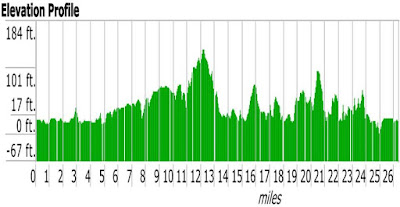 |
| Cape Cod Marathon Elevation Profile |
simple. Hills will make you
stronger. More specifically:
- Improves muscle strength. Running uphill will strengthen your
hamstrings, glutes, hip flexors, calves and Achilles. Your quads take over most of the workload on
the downhill. You also use a lot more
upper body muscles running hills than running on flat roads. - Improves endurance.
- Improves power as your muscles need to
work harder to fight gravity. - Improves running form and promotes a
more efficient stride. - Hills can often break up your
rhythm. Train on the hills to master a
technique so there are no surprises on race day. Most new runners will try to surge up a hill
and then feel totally beat at the top.
The best advice I can give you is to not worry about your pace—focus on
your effort. Maintain your effort level
on the way up and then allow gravity to carry you downhill.
Running Uphill
changing gears. Your form will change
and your pace may slow down but your effort levels should remain the same.
and no slouching. With this you will be
running more on your toes—that’s ok, forefoot running on hills is what we want!
swing. Faster arms translates into
faster leg turnover. Some coaches will
talk about using “higher knees” on the hills but the Road Runners Club of
America stresses that the focus should be on your arms and your legs will
naturally do their job.
at the top of the hill, your effort levels are too high. Try slowing down and finding the right speed
to tackle the hills with ease.
Running Downhill
than uphill running. It pulls up a lot
of strain on your quads and pressure on your hip and knee joints.
be in control on a downhill and accelerate gradually. Your natural reaction will be to slow down
and “put on the breaks” but that can put your knees at an even greater risk. Instead, lean forward and allow gravity to
carry you downhill. Use short strides
and keep your elbows tucked in.
How can you incorporate hills into your
training plan?
About
Coach Jen Skiba
middle-distance runner for Falmouth High School and has been involved with the
sport for over 12 years as a runner, official, race management, and coach. A Mashpee Fitness trainer and Certified
Running Coach through the Road Runners Club of America (RRCA), Jen enjoys
working with runners in the gym and on the roads. “Whether you are a beginner
looking to get started running or at the intermediate level hoping to improve
your times or tackle new distances, I can help you reach your goals!”
Marathon Training Tip #1: The Long Run
The long run is the staple to any training program. In fact it is one of the most important runs
of the week. The benefits of the long
run are both mental and physical as your prepare for race day.
confidence. Confidence in yourself, your
running and your ability to get to that finish line. You also learn to handle discomfort
and while finding out what you are capable of if you keep going.
training. It’s about the time spent on
your feet and building endurance. Some
training plans will incorporate tempo work at goal race pace but for the most
part, your long run should be done at the sub-maximal level. Think about conversation pace—or anywhere
from 30-90 seconds slower than your normal running pace. When you slow down, you’re training
aerobically and the body relies less on burning carbohydrates and relies more
on burning fat for energy. Running at
conversation pace, we can train our bodies to stay in that aerobic zone longer
before crossing over to anaerobic where no oxygen is available and we start to
build lactic acid.
5 Tips to Help You Survive the Long Run:
- Map out a route ahead of time.
- Bring hydration and fuel.
- Find a buddy.
- If you’re having a bad day, accept that you’re having a bad
day. - Patience is key. Pace
yourself and take it one mile at a time.
Happy running!
About Coach Jen Skiba
Falmouth High School and has been involved with the sport for over 12 years as
a runner, official, race management, and coach.
A Mashpee Fitness trainer and Certified Running Coach through the Road
Runners Club of America (RRCA), Jen enjoys working with runners in the gym and
on the roads. “Whether you are a beginner looking to get started running or at
the intermediate level hoping to improve your times or tackle new distances, I
can help you reach your goals!”
Cape Cod Rehab’s Cape Cod Marathon Training Tip: Introduction
You signed up to run the 2016 Cape Cod Marathon or Cape Cod Half
Marathon!
haven’t registered, there is still time… www.capecodmarathon.com)
will be your 1st or your 30th, you made a big commitment and we want to be a part of your journey to the finish line.
has signed on as a Cape Cod Marathon sponsor.
Not only will you see us around race weekend but our trainers, coaches
and physical therapists will be providing weekly training tips on the Mashpee
Fitness blog leading up to the race beginning next week—the week of July
11th. Some topics will include: training
in the heat, incorporating hills into your running, recovery
techniques, dealing with injuries, kinesiotaping, etc. Bookmark mashpeefitness.blogspot.com and follow Cape Cod Marathon & Cape Cod Rehab on Facebook to never miss a
weekly training tip!
the 2016 race, Mashpee Fitness trainer & RRCA Certified Running Coach Jen Skiba will be providing training
plans free for runners. The 16-week
marathon training plans were just released this weekend and training will begin
on July 11th while the 12-week half marathon training plans will be released in
a couple weeks—training begins August 8th.
You can access these training plans from the homepage on the Cape Cod Marathon website:
www.capecodmarathon.com.
thumb to prevent injury is to find a training plan where Week 1 matches the
mileage you are currently running. Coach
Jen put together Level 1 and Level 2 training plans. If these don’t work for you and you’re
looking for a more personalized plan based on your abilities and goals, contact
Coach Jen at running@capecodrehab.com.
to congratulate you and wish you good luck with your training!
Team
About Cape Cod Rehab
About Coach Jen Skiba
3 Local Runners will take on the 120th Boston Marathon
Qubeck are set to make the 26.2 mile journey from Hopkinton to Boylston Street on
Monday, April 18, 2016 for the 120th running of the Boston Marathon. All 3 men have different stories, experiences
and reasons for running but they can all agree that it will be an honor to toe
the line at the world’s oldest marathon and most prestigious running event.
Joseph
Carroll PT DPT SCS
Joe has been running for over 30
years. He joined an after work running
club because he wanted to get to know a co-worker that was in the group. It turned out to be a good decision because that
person is his wife Kathy. Together they
co-own Cape Cod Rehab and will be celebrating their 30th wedding anniversary
this year!
lifestyle. Joe said that running “helps
me manage stress, allows me to keep my weight in check and unlike some other
sports I’ve played, I can continue competing into the future.”
Marathon and 6th marathon overall. The
Boston Marathon has been part of his life since his father began taking him to
the race at age 6. He said, “It is a thrill and an honor to participate in Boston, a world class
event. Boston Strong.”
Hospital Miles for Miracles Team and pledged to raise $7,500. “With the help of many people, I have
surpassed by goal. I am teamed up with a
patient partner, Nathaniel, who is a 5 year old with Cystic Fibrosis. I am running for Nathaniel and other kids who
are unable to run. I worked for BCH
while in college and have a great respect for the amazing work done there,” said
Carroll.
Nathaniel beat Cystic Fibrosis:
will head to the starting line feeling good.
His motto: “Pain is temporary.” He
added that his goal for the race is to “represent BCH, Nathaniel, my family and
all of my supporters to the best of my ability and to cross the finish line
with a big smile.”
Eric
Wheeler MSPT MPE CSCS
Compared to Joe, Eric is relatively new
to running. In almost 6 years of
running, he has an extensive list of athletic accomplishments including 2x
Ironman finisher with a PR of 10:09:05.
A Physical Therapist at Cape Cod Rehab, Eric started running when almost
everyone he knew at work was excited about the 2010 Falmouth Road Race. He registered for the Falmouth in the Fall
race that year to lose weight and get healthier to set an example for his kids. He sees running as a journey of self-discovery. “How hard can I push myself? I enjoy the places my mind goes when I’m
running. It’s an escape from daily
pressures that we all face. Running makes
me feel good about myself,” said Wheeler.
this will be his first Boston Marathon.
He earned his way into the 2016 Boston Marathon by running the respected
Boston Qualifying Standard with a 3:06 at the Providence Marathon in May of
2015. Eric could not put into words why
Boston is so special to him, “It’s hard to explain. It’s Boston—the hub of the universe.”
used the term “challenging.” As he
reached his peak weeks, Eric was diagnosed with a core muscle injury and will
be going in for surgery 3 days after the marathon. This may stop some from running but not
Eric! He may be in pain the entire 26.2
miles but his goal is to “give the best effort I can, have fun and enjoy the
day.”
Capt.
Christopher A. Qubeck
Chris is a member of the Mashpee FitnessCenter and one of Eric’s past patients at Cape Cod Rehab.
He will be running the Boston Marathon for the second year in a row,
both times he received an invitational entry from the Massachusetts National Guard,
where Chris works full time in the communications field. He has run 3 total marathons (all in 2015);
his first full marathon was Boston last year.
Force Basic Training back in the late 90’s.
He always enjoyed running but said it was one of those things that fell
off the radar between college and the military.
Friend and Mashpee Fitness Center trainer, Jen Skiba, talked him and his
wife into running the 4th Annual Piggy Trot in Osterville and he realized that
running was something that he really missed and wanted to get back into. Since the Piggy Trot in May 2013, Chris
started finding local races on the weekends and before he knew it, he was
hooked!
runs. While he enjoys getting outside,
exploring new places and physically challenging himself, he also feels like it’s
a great way to decompress after a tough day.
He added, “Running has been extremely therapeutic for me, having been
deployed for Iraqi Freedom twice since 9-11.”
Boston Marathon was so special to him.
This was his response:
communications field, part of our job is to provide communications (internet,
phone, and radio support) to first responders.
We’re utilized during hurricane and snow storm response as well as the
Boston Marathon every year. In 2013 we
supported the Boston Marathon as we’d done for many years prior. We set our gear up with the Army National
Guard folks over in Rehoboth, MA. Early
afternoon Marathon Monday, things appeared to be wrapping up with the race so
we began packing up our equipment, and it was a good thing we did. We were just about finished packing our
trailer when one of our Army counterparts came outside and said that something
serious just happened. We all rushed
inside to find out that at least one explosion, maybe two, went off right by
the finish line on Boylston Street. We
finished packing up our gear and received State Police escort into downtown
Boston. We set up our tent and communications
gear out on Boston Common where we operated for the next 26 hours straight,
providing emergency communications to whomever needed it. So ever since that horrific day, I’d had it
in the back of my mind that I wanted to run that race someday. Through a Massachusetts National Guard
program, I was able to apply for and receive an invitational race bib. This marathon is THE one race on the planet
that just about every runner dreams of doing some day, and I was extremely
lucky to have had the opportunity to participate as a runner versus a supporter
in 2015, and now again in 2016. It’s an
absolute privilege and an incredible honor to be able to run the most historic
race on the planet once more.”
as he’d like with the time he has available, Chris feels very confident he won’t
have any issues finishing. He would like
to run around 4 and a half hours but really would be happy to just cross the
finish line.
3 Glute Exercises to Improve your Golf Game
Performance Institute (TPI) calls the glutes the “King of the Golf Swing.” Why?
play a very important role in the golf swing.
Two words: Power and consistency.
main roles of the glutes is to stabilize the hips. In the golf swing you generate power from the
ground up. To maintain power throughout
the backswing, your glutes must maintain pelvic stability as you internally
rotate on the back leg and your upper body rotates. Stability is also important to allow rotation
in the downstwing and the follow through.
If you’re lacking stability, your consistency will suffer and it could
even lead to some swaying and sliding swing characteristics.
are not firing properly, other muscles may compensate and could also lead to
overuse injuries of the hamstrings and lower back.
Clamshell
Medius, Hip External Rotation
your side with your knees bent and your legs stacked on top of each other. Keep your feet together and lift your top
knee as far as possible without rocking.
I like to suggest putting your hand on your hip so you can feel any
rocking. Try 2 sets of 10 repetitions
then repeat on the other side.
Reverse Clamshell
Rotation
your side with your knees bent and your legs stacked on top of each other. Keep your knees together and lift your top
foot as far as possible. Try 2 sets of
10 repetitions then repeat on the other side.
Bridge
your back with your knees bent and your feet flat on the ground. Lift your hips off the ground. Hold for 1-2 seconds then lower. Try 2 sets of 10 repetitions and focus on
using your glutes. If you feel your
hamstrings, your glutes are not firing correctly!
Balance & Stability Training for Golfers
center of gravity when external forces are placed on it.
to remain unchanged or aligned in the presence of change or outside forces.
must have good balance to maintain posture while moving through the golf swing
and remain stable on uneven surfaces or even in windy situations. The golf swing is a complex movement pattern
combining mobility and stability. It
requires the ankles, hips and spine to be mobile while your feet, knees and
pelvis must be stable. You can create
stability by combining balance, strength, and muscle endurance.
Certified Burdenko Method instructor, we learn the six essential qualities of
life and sport are balance, coordination, flexibility, endurance, speed and
strength. We must start at the bottom of
the pyramid and master balance, coordination and flexibility before moving on
to developing endurance, speed and strength.
While many people feel that balance and stability training is more
appropriate for a senior exercise program, it is very important to work on
balance to maintain postural alignment and control while developing power in
younger athletes.
Burdenko, balance is the first fundamental in golf. You must maintain posture throughout your
swing while at the same time generating speed/power and stretching/contracting
adjacent segments. You a need to be able
to load on the back leg before transitioning into the downswing. Better balance means better control of the
club which means better accuracy. Maintaining
balance and posture throughout the entire swing will also help with
consistency. Isn’t that what we all
strive for?
consider the surfaces you are playing on.
Golf courses are typically not flat!
You may be hitting on a hill, one foot in a bunker, or even strange foot
positions to avoid trees or other obstacles.
It’s important to stay on your feet and practicing your balance can
help.
balance with TPI’s Single Leg Balance Test.
According to TPI, “It highlights any ankle mobility or proprioceptive
imbalance from left to right as well as overall stability in the core.”
this test without a Certified TPI Professional.
The Single Leg Balance Test begins by standing with your arms by your
sides. Lift one leg to 90 degrees so
that your thigh is parallel to the ground.
When you’re stable and feel balanced, close your eyes. How long can you maintain balance? Any movement or repositioning of the leg/foot
would be considered a loss of balance.
closed.
my balance?
are a variety of exercises you can do to improve your balance. Balance starts to decline when we reach a
certain age so it’s important to keep working on your balance every day.
exercises to try:
1. Half Roll Tandem Stance
half roll with one foot in front of the other.
then repeat with the leg in front.
closing your eyes.
2. Half Roll Leg Swings
half roll.
backwards.
your arms swinging opposite arm/leg.
closing your eyes.
3. Single Leg Stance with Torso Turns
the ground.
lower body stability while rotating your torso side to side. Remember: slow and
controlled!
post by Jen Skiba.
Running with Music: the Good and the Bad
way for many to clear their minds. Whether you’re training for a race or just
feel like going for a run, there are many benefits to this aerobic activity. I
was speaking to some of the members at the Barnstable Fitness Center in Hyannis, MA who are avid runners
about their training methods when the topic of music came up. It is very common
for people to listen to music while running, but is it really that beneficial?
regards to why they run. An associator is considered a person who prefers to
focus inwardly during a run: thinking about their day, how they are breathing,
listening to their foot strokes, etc. A dissociator is someone who will spend
their runs looking forward to forget what they’re putting themselves through (Bean,
2010; Kurton & Blair, 2013). Dissociative runners are more likely to listen
to music to help them “forget” they are running; this isn’t always a good
thing. Here are the pros and cons for running with music:
Pros
should consider with music: the tempo, the genre of music, the lyrics in the
song, any memories and emotions the song could trigger, and the order of the
music in your playlist (Kurton & Blair, 2013). A high tempo, fast pace song
can help you keep pace. This type of music also can elevate positive aspects of
your mood such as excitement and happiness, reducing negative aspects such as
tension, fatigue, and even confusion (Bean, 2010).
an avid runner, says he trains with music but doesn’t race with it. “Sometimes
when I have my headphones on I’m not actually even listening to my music. It’s
just playing,” says Carroll. In this respect, Carroll is using music as
a distraction, selecting playlists with different types of music for different
types of running (i.e. hill workouts, long runs, treadmill runs, etc.).
“External stimulus such as music can actually block some of the internal
stimuli trying to reach the brain- such as fatigue related messages from
muscles (Bean, 2010).”
Cons
is a necessity to get through the long, boring miles on the treadmill for RRCA
Certified Run Coach Jen Skiba, she is a strong believer in leaving the
headphones at home when running outside. “I look at it from a safety
standpoint. It is so easy to get lost in your music and become totally
oblivious at what’s going on around you.” While music can distract you,
this can be very hazardous while running outside. Being aware of your
surroundings is important. Look out for potential hazards such as cars, the
weather, and even others around you.
training with music can be detrimental from a training standpoint as well. Two
key factors in determining effort exerted are breathing and foot strike- both
you cannot hear while listening to music (Bean, 2010). Also, if you train only
listening to music, what if your iPod dies? How do you keep pace without it?
Many road races actually ban runners from having head phones in, even causing
disqualifications and ineligibility for elite runners in championship races if
they run with music.
cons to listening to music while running. If you do, try listening with only
one headphone in at a lower volume. Also, try not to run with music every time
you run. You might find that you enjoy your run without it.
2015, from https://www.runnersworld.com/workout-music/running-debate-running-with-music
case for and against. Retrieved December 29, 2015, from https://www.theguardian.com/lifeandstyle/the-running-blog/2013/mar/13/running-with-music-for-against
Halloween Workout
Celebrate Halloween with this spooky workout!
perform any exercise that causes or increases pain.
feet into a squat position, weight in your heels and arms raise parallel to the
ground. Stand up, lowing arms to your side and repeat 10x.
ball. Squat down and tap the floor with
your medicine ball then stand up tall and reach the medicine ball
overhead. Practice good squat form
keeping your knees behind your toes. Repeat
10x.
your knees. Begin in an athletic stance
with knees slightly bent and back straight.
Take big steps forward while staying in that athletic stance and keeping
tension in the theraband. Feel the burn
in your glutes!
Bench
exercise, begin seated on a bench with both legs on one side. Sit back on your tailbone, holding a pelvic
tilt with your back straight. Hold on
the bench behind you for support. Kick
both legs straight over the bench together.
Tap the floor with your feet then repeat to the other side, alternating
for 10 repetitions.
rests on your upper back, shoulders and neck hanging off the physioball ball. Keep your hipss elevated and perform a crunch
with your head and neck in a neutral position. Repeat 10 repetitions.
your feet. Pelvic tilt pressing your
lower back into the mat and lift the ball off the ground. Pass the physioball from your feet to your
hands. Continue to lower the ball to the
ground in your hands. This is a
challenging core exercise and it’s important that you only lower the ball as
far as you can hold a pelvic tilt.
Continue to pass the ball back and forth for 10 repetitions.
physioball. Dig your heels into the
physioball as you squeeze your glutes and lift your hips off the ground. Hold for 2-3 seconds and lower. Repeat 10x.
your elbow (same side) while keeping your leg parallel to the floor. Repeat on the other side, alternating for 10
repetitions.
mobility in your back.
under your hips). Start with your back
in a neutral position then alternate between arching your spine upward toward
the ceiling (cat) and rounding your back (camel) by relaxing your back and
allowing your stomach to fall towards the ground. Repeat 10x.
7 BOSU Moves for Runners
Have
you ever tried exercises on a BOSU Balance Trainer? This half-dome stability ball is great for
building a strong core, ankle stability and work on overall strength, balance
and coordination. Challenge yourself by
adding a BOSU Balance Trainer to your current strength routine. Below are 7 BOSU exercises with runners in
mind focusing on the lower body, glutes and core—all super important for
strong, fast, injury-free running!
up before trying any of these moves.
Begin with 10 repetitions each. Do not perform any exercise that causes or
increases pain.
BOSU
Squats
BOSU
Lunges
BOSU
Side Lunges
BOSU
Side to Side Push Ups
BOSU
Plank with Leg Lifts
Begin in a plank position with your hands on the BOSU, this time with the dome facing down. Engage your glute muscles and lift one leg off the floor, foot flexed. Hold for 1-3 seconds and return to start position. Repeat with the other leg, alternating for 10 repetitions.
BOSU
Plank with Mountain Climbers
BOSU
Single Leg Bridges
Blog post by Jen Skiba, RRCA Certified Running Coach
2 Types of Runs You Should Be Doing
Conversation Pace Run
be a staple to any training plan. In
fact 75-80% of your weekly mileage should be done at conversation pace. So what exactly does that mean?
you. Are you breathing heavily and
struggle to get any words out? Or are
you relaxed, breathing easy and feeling good?
relaxed, breathing easily, feeling good kind of run. It’s the pace you can run and hold a
conversation or even sing a song at submaximal effort.
hard, too often. “If I am pushing myself to the limit every day, I will get faster in a
race. Right?” Wrong.
High intensity running on an everyday basis will get you injured and/or
burnt out very fast. Don’t get me wrong—it can also be difficult
slowing yourself down but it will pay off in the long run.
conversation pace run?
Increase aerobic capacity
Increase and improve oxygen consumption
Improve fat metabolism
Improve stamina/endurance
Helps the body adapt to the stress of sustained running
not pushing yourself too hard? At
various points during your run, do a little talk test. If you can’t spit out a sentence or two, slow
it down. Walk a little if you have to. Chances are you’re heart rate is too high and
you have crossed over into that anaerobic training zone where lactic acid
starts to build up and fatigue sets in quicker.
Fartlek Run
meaning “speed play.” A Fartlek
run is just that—playing with speed!
It’s a form of interval training with fast bouts of running followed by
a recovery period at conversation pace.
to Fartlek training, a Fartlek run is meant to be fun. The goal is to vary your pace (at about
70-90% effort) throughout the run and vary the time/distance of the sprinting
and recovery phases.
uses landmarks on your route as markers.
Sprint to the next mailbox, jog two telephone poles, sprint to the next
driveway, etc. The increase in speed
incorporates both the aerobic and anaerobic systems, challenging the
cardiovascular system.
the time will cause a runner to plateau.
Experiment with Fartlek runs to change gears and recruit different
muscle fibers. It also helps simulate
the racing experience. Think about the
small surges to pass another runner or slowing down to a walk at a water
station.
Fartlek run?
Increase speed
Improve endurance
Build strength
Recruit different muscle fibers
Varying intensities means greater calorie burn
Practice and promote good running form
you are starting to incorporate speed workouts into your training. Make sure you have a good 4-8 weeks of
aerobic base building down before you start any interval training.
before beginning a fartlek run! Start
with only a few repetitions in Week 1 and over time increase the number of
repetitions along with increasing speed intervals while decreasing rest intervals. Remember this is a form of interval training
and a hard effort so limit to once a week—not every run! With any interval training you want to avoid
doing too much too soon.
The Animal Workout
moves. Begin with 10 repetitions each. Do not
perform any exercise that causes or increases pain.
Frog Squats
challenging exercise strengthening the quads and glutes while increasing
hamstring flexibility.
a little wider than shoulder width apart, toes facing forward. Place your hands on your ankles and press your
hips back, lowering yourself into a deep squat.
Keep your back straight and head up. Exhale as you straighten your legs,
feeling a nice stretch in the hamstring muscles. Repeat for 10-15 repetitions.
Dipping Bird
single leg dead lift is great for flexibility, strength and stability of the
hamstrings, glutes and core.
dumbbell in your left hand while standing on your right foot. Hinge forward at the hips. Your left leg will rise up in extension
behind you and move in the same plane as your upper body. Keep a soft knee, forward facing hips, neural
head position and the core engaged.
Don’t allow your upper body to hunch forward or to move independently
without your free leg. This exercise is often done incorrectly so
check in with a trainer if you are unsure of the movement. Repeat 10-15 repetitions and switch to the
other side.
Stork with Lateral Raises
test your balance while strengthening your deltoids.
one foot holding two dumbbells, palms facing inward. Raise your arms up, palms facing down, until
your arms are parallel with the ground.
Lower to start position. Repeat
10-15 repetitions and switch to the other side.
Inchworm
core exercise that will test your hamstring flexibility and work on shoulder
and core stability.
hands on the ground in front of you.
Walk your hand out until you are in a plank position. Challenge yourself with a push up before
walking your feet in towards your hands.
Repeat for 10-15 repetitions.
Donkey Kicks
known as quadruped bent-knee hip extension, targets the glutes as it stretches
the hip flexors.
(hands under your shoulders, knees under your hips) with your toes digging into
the ground. Keep your left knee bent at
90 degrees while you squeeze your glute and press your heel into the air. Lower leg without touching the floor. Make sure you use slow, controlled movements
and do not swing your legs. Repeat 10-15
repetitions and switch to the other side.
Bird Dog
core exercise that also focuses on shoulder flexion and hip extension.
(hands under your shoulder, knees under your hips) with your toes digging into
the ground. Keep your back straight
while lifting your opposite arm and leg in the air, parallel to the ground. Return to start position and switch. Repeat for 10-15 repetitions.
Cat Camel
workout with the cat camel stretch for mobility in your back.
(hands under your shoulder, knees under your hips) with your toes digging into
the ground. Start with your back in a
neutral position then alternate between arching your spine upward toward the
ceiling (cat) and rounding your back (camel) by relaxing your back and allowing
your stomach to fall towards the ground.
Repeat for 10-15 repetitions.

